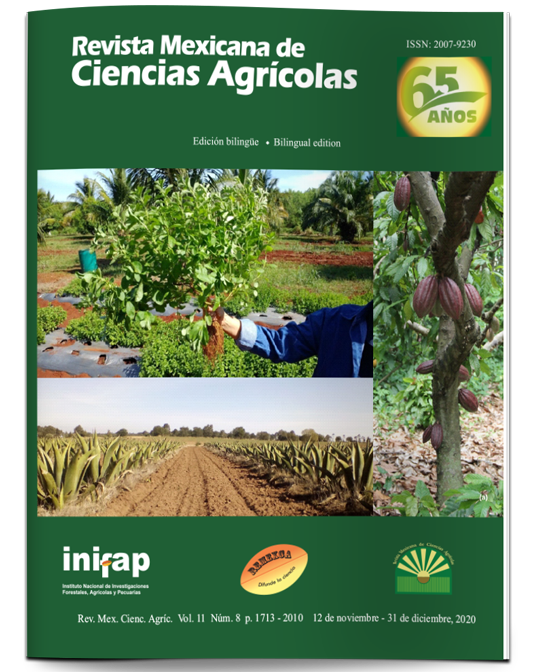Competitiveness and profitability of berries production in Jalisco
DOI:
https://doi.org/10.29312/remexca.v11i8.2595Keywords:
production decisions, market distortions, policy analysis matrixAbstract
During 2017, Jalisco was the second state with the highest contribution to the national agricultural GDP (SIAP, 2020). The cultivation of berries is an important socioeconomic activity in this state, which include cranberry (Vaccinium spp.), raspberries (Rubus idaeus) and blackberries (Rubus ulmifolius). Jalisco is the main producer of raspberry, the second of blackberry, and the fourth of strawberry (Fragaria spp.) at the national level (FIRA, 2016). However, it is perceived that unlike strawberry and blackberry crops, the cultivated area of raspberries increased in recent years, this increase cannot be explained by changes in price or yield but by other factors. The objective of the study was to determine if there were distortions in the markets that could have influenced the choice of producers in Jalisco for a particular type of berry. It was started from the hypothesis that of the berries, the raspberry had a greater competitive or comparative advantage. To measure the degree of market distortion, the methodology of the policy analysis matrix was applied. The results indicate that the three types of berries were profitable; however, some economic distortions benefited the raspberry and blackberry crops, and negatively impacted the strawberry crop, in addition there was a large subsidy to the profits of the raspberry crop. It is concluded that distortions created by the market and the government influenced the choice of the type of berry to be sown by producers, favoring raspberry production.
Downloads
Published
How to Cite
Issue
Section
License
Copyright (c) 2020 Revista Mexicana de Ciencias Agrícolas

This work is licensed under a Creative Commons Attribution-NonCommercial 4.0 International License.
The authors who publish in Revista Mexicana de Ciencias Agrícolas accept the following conditions:
In accordance with copyright laws, Revista Mexicana de Ciencias Agrícolas recognizes and respects the authors’ moral right and ownership of property rights which will be transferred to the journal for dissemination in open access. Invariably, all the authors have to sign a letter of transfer of property rights and of originality of the article to Instituto Nacional de Investigaciones Forestales, Agrícolas y Pecuarias (INIFAP) [National Institute of Forestry, Agricultural and Livestock Research]. The author(s) must pay a fee for the reception of articles before proceeding to editorial review.
All the texts published by Revista Mexicana de Ciencias Agrícolas —with no exception— are distributed under a Creative Commons License Attribution-NonCommercial 4.0 International (CC BY-NC 4.0), which allows third parties to use the publication as long as the work’s authorship and its first publication in this journal are mentioned.
The author(s) can enter into independent and additional contractual agreements for the nonexclusive distribution of the version of the article published in Revista Mexicana de Ciencias Agrícolas (for example include it into an institutional repository or publish it in a book) as long as it is clearly and explicitly indicated that the work was published for the first time in Revista Mexicana de Ciencias Agrícolas.
For all the above, the authors shall send the Letter-transfer of Property Rights for the first publication duly filled in and signed by the author(s). This form must be sent as a PDF file to: revista_atm@yahoo.com.mx; cienciasagricola@inifap.gob.mx; remexca2017@gmail.
This work is licensed under a Creative Commons Attribution-Noncommercial 4.0 International license.



